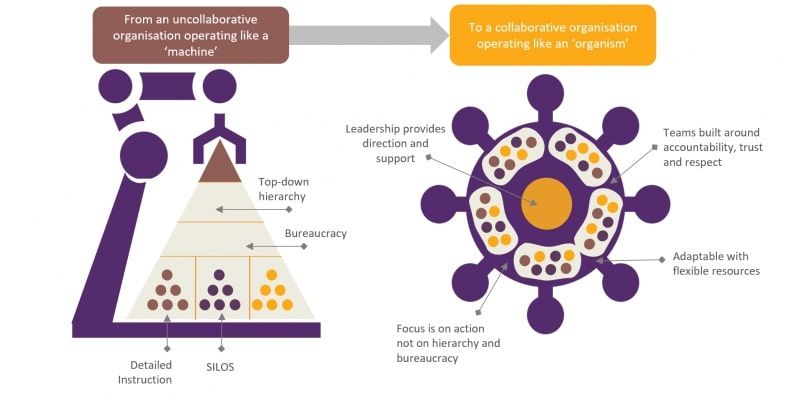Collaboration in the workplace: Learn about the 5 pillars for effective communication and how they are essential to purpose and strategic direction of an organisation.
Setting the ‘Purpose’ and ‘Strategic Direction’ of your organisation can take days, months, and sometimes even years perfecting. However, some of the biggest challenges in executing an organisational business plan often relates to clearly communicating the message down to your teams. So how can leaders turn these plans into tangible actions at the grass roots level?
One of the key elements to ensuring you effectively execute your purpose and strategic direction is to foster collaboration in the workplace. Future Institute of Australia recently sat down with Greg Smargiassi from OURCFO to discuss how he is using a collaborative approach in determining his company’s purpose and strategic direction. You can watch the full video here .
For any organisation to collaborate effectively, it needs to ensure that the business has a culture, processes, and systems that encourage collaboration. Below Future Institute has developed the 5 pillars of collaboration for organisations to consider.
Future Institute’s 5 Pillars for Workplace Collaboration include:
- Alignment of values and objectives between employees and management;
- A climate of mutual trust and respect between all tiers of an organisation;
- The knowledge of all the staff, customers, and suppliers is shared and pooled to optimise the organisations operations and opportunities;
- Decision making is more decentralised than top down structured organisations, and more key stakeholders across the business play a role in defining the direction in which the organisation moves; and
- Hierarchical structures are kept to a minimum. The company is managed democratically by consensus rather than by command and control.
How well does your organisation rate against these 5 pillars? Are there any areas for improvement? What more can you be doing as a leader to improve collaboration or create a collaborative workplace environment?
Organisations need to be structured to enable effective collaboration at all levels – up, down, and laterally.
The below diagram illustrates two very different organisational structures. The one on the left is a typical command and control structure and operates much like a machine. There is a top down hierarchy, often with several specialised departments independently contributing to achieve the organisation’s objectives.
The organisation on the right operates in a far more collaborative way. Leadership is at the centre of the organisation. These leaders are visionaries and exceptional motivators. Their teams make up several surrounding strategic groups with a variety of business units that enable collaboration at the highest level. This structure works more like a living organism to achieve the overall strategic direction.

The benefits of a collaborative organisation will enable you to involve managers, frontline leaders, and staff to understand the purpose and strategic direction of the organisation. Collaborative organisations are more flexible, results-driven, and their communication strategies operates effectively up, down, and laterally.
As a leader, ask yourself this question…
When was the last time you consulted with your key managers to seek their feedback about the organisation’s purpose and strategic direction?
Are you doing enough to encourage collaboration at all levels (up, down, and laterally)?
Would the implementation of our 5 pillars assist your organisation to improve its culture by changing or modifying its structure to be more collaborative?
If this is a challenge that you are facing within your organisation, we would love to hear from you.
You can contact us at info@futureinstitute.edu.au, call us on 1300 329 300, or fill in our contact form.
Additionally, you can check out the courses we have on offer and find out how we can personalise them to suit the specific needs of your organisation.





